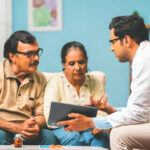“It’s tricky to know if responses are filtered through cultural issues,” Dr. Schned says.
However, culture may not be as strong a factor in the translation issue as many think, counters Dr. Cortés. “I think culture is overrated. A lot of people are quite familiar with the culture of medicine and the healthcare system. It comes down to clear communication.”
Literacy is another concern at times. A patient may not speak English well and may not be able to read or write well in his or her native language. For instance, Dr. Onel gives the example of a mother who was given information in Spanish on her child’s juvenile dermatomyositis. However, the mother could not read.
Sometimes literacy is the problem, and other times the problem is specifically health literacy. A National Assessment of Adult Literacy study from 2003 found that 36% of American adults, or 78 million people, had only basic or below-basic health literacy skills.1 The elderly, people with limited education, ethnic minorities, and LEPs were identified as high-risk population groups that often scored at basic or below-basic levels on the assessment, according to the American Medical Association’s “Health literacy and patient safety: Help patients understand.”2
Finding Solutions
Despite language barriers, there are some strategies that hospitals and private practices can use to better reach LEP patients.
One effective method is reaching out to peer leaders, Dr. Robbins says. The Hospital of Special Surgery has phone lines for lupus patients in English, Spanish, and certain Asian languages. When a patient calls the phone number, he or she speaks to another person who has lupus, who speaks the native language, and who has been trained to speak about the disease. Tapping into the help from peer leaders also is useful for clinical trials, she adds (see “Involving LEPs in Clinical Trials,” above left).
“It would behoove the average rheumatologist in an office to think about these kinds of resources and refer patients to places that can help,” she says.
Self-help groups for patients who speak certain languages could also be helpful, Dr. Ginzler says. This may relieve the burden of patient education, which is often hard to complete during examinations.
For written patient education, the ACR has more than a dozen information sheets in Spanish about various rheumatologic diseases. Organizations such as the Arthritis Foundation and the Lupus Foundation and the National Institute for Arthritis, Musculoskeletal and Skin Diseases also have a wealth of material in Spanish. And Dr. Onel likes the idea of making more patient education visual, which is something she has observed for kidney-transplant patient education.


